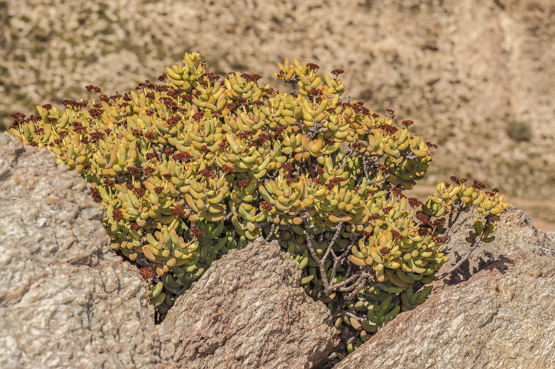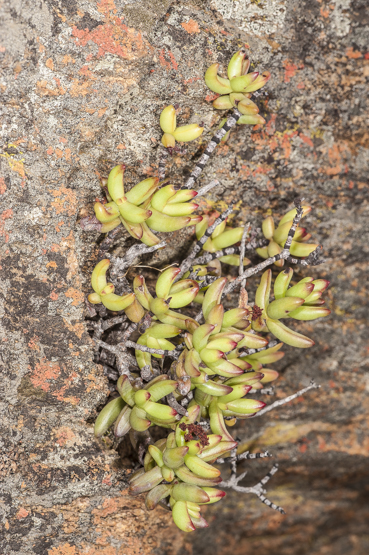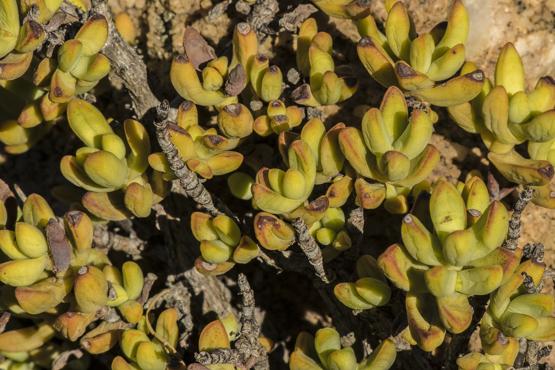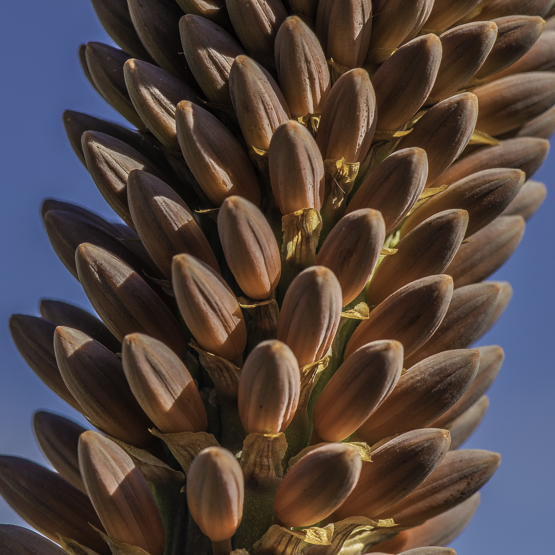
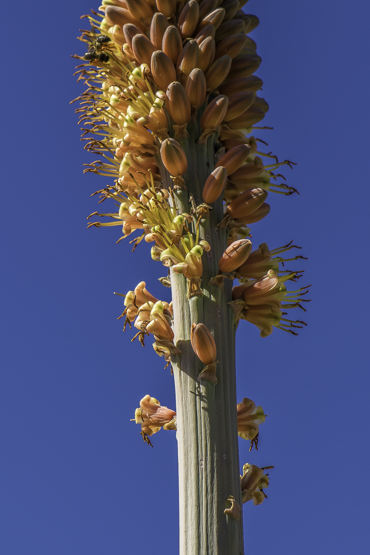
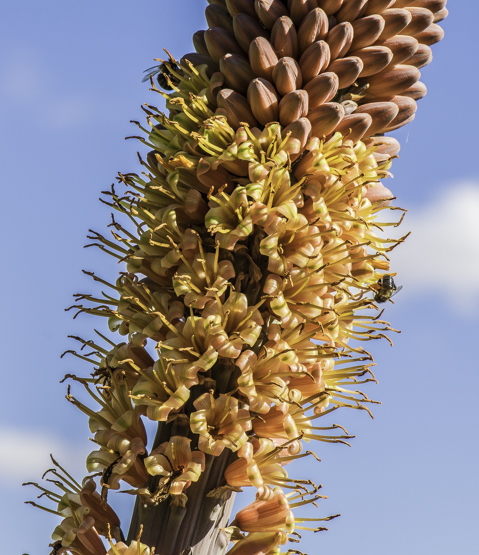
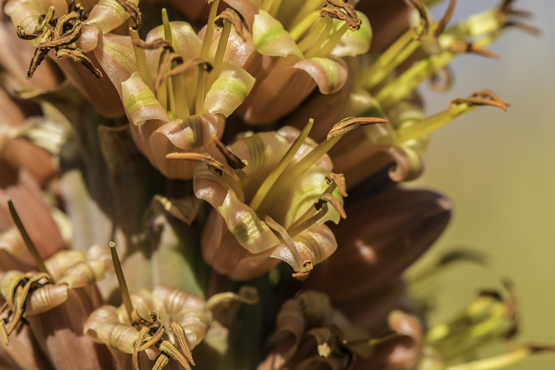




Over a period of hundreds of years, a great part of the original forest vegetation of Madagascar’s Central Plateau has been destroyed by annual burning.
The resulting savannah-like grasslands are very poor in species. A few succulents can survive the fires, either because they have very thick and fleshy leaves, e.g. the subject of this post, or because they hide underground (such as geophytic Euphorbias, see Euphorbia primulifolia).
A. macroclada is an impressive plant with its leaves up to a meter long and 17-22 cm wide at the base. In winter, the stemless rosettes are adorned with (usually single) inflorescences which in old specimens may be up to 2.5m tall. The many flowers are 2-2.5 cm long and 2 cm wide at the mouth.
It is probably the most widely distributed of the Madagascan Aloes, from 200 km north of Antananarivo to Fort Dauphin in the far south, usually at altitudes between 1200 and 1500 m.
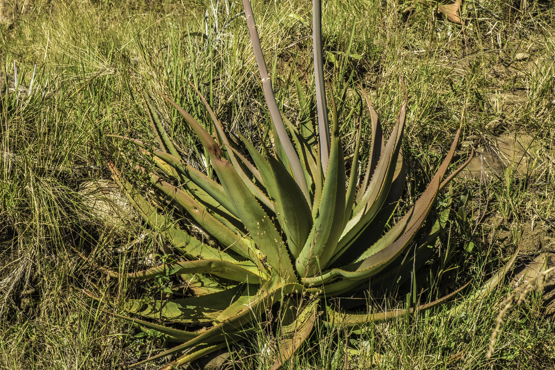
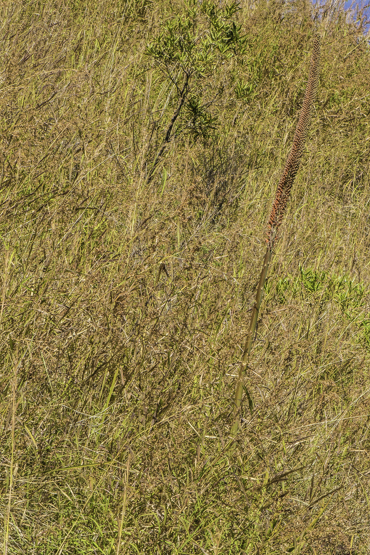
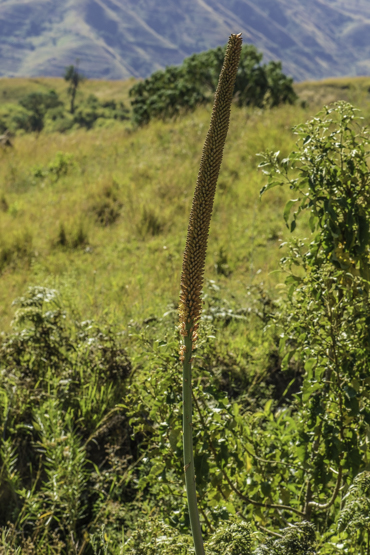
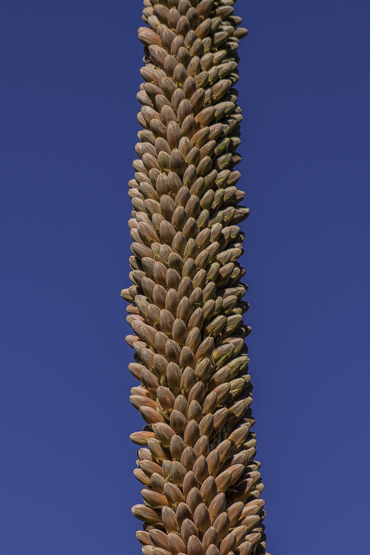
Plants of this species are sparingly to densely branched (usually from the base) and form clusters up to 9 cm in diameter.
The columnar plant bodies are usually erect (rarely more or less flat on the ground); 20-90 mm long and 6-15 mm thick.
Flowering occurs from May to October; the flask-shaped flowers have cream, 9-11 mm long petals.
The species is found in the western part of Namaqualand from near Port Nolloth to the Vanrhynsdorp area, on exposed quartz gravel flats and gentle slopes, rarely on rocky outcrops and in shallow pans on rocks.
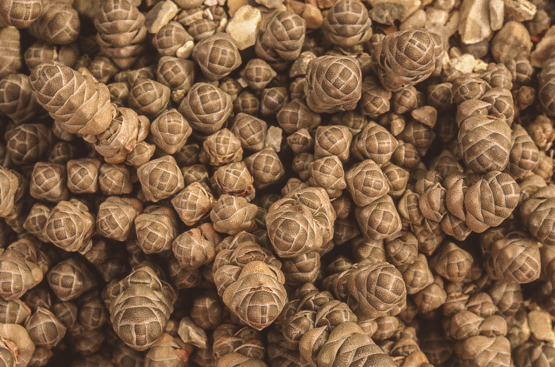
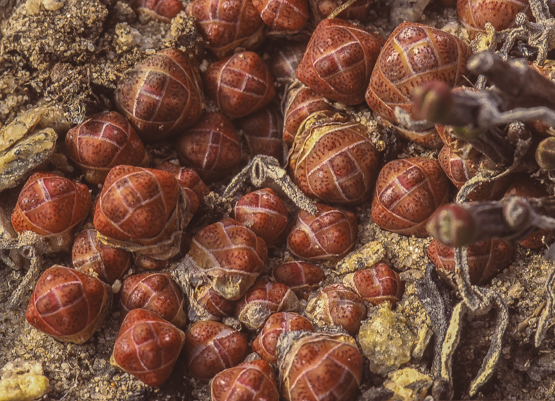
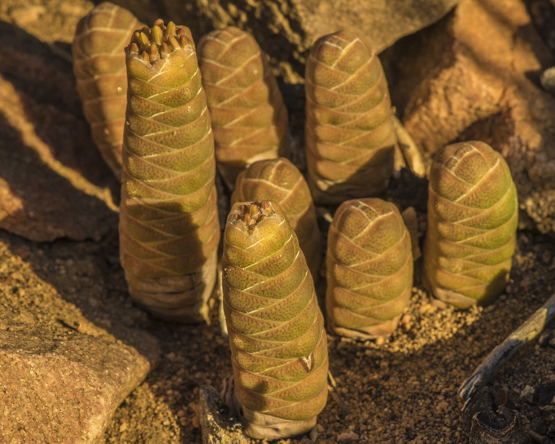

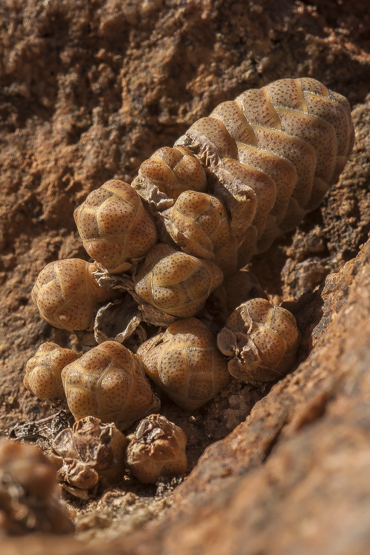
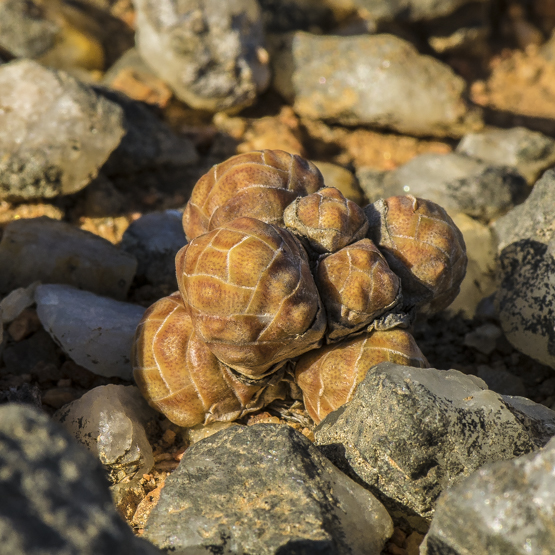
The Latin word calculus means pebble and in this case probably refers to both the roundness and the firmness of the plant bodies.
These bodies are to 30 mm diameter, ball- to barrel-shaped, very firm, whitish-green to pale yellowish-green, without any markings; they form a hemisphere with age.
The flowers are open at night (sometimes staying open during cool mornings) and are said to smell strongly like cloves or carnations; they are golden yellow to deep reddish orange and appear in April-June.
The plants occur in full sun on salty quartz flats and gentle slopes in the Knersvlakte.
First picture taken 10th Sept. 2010; others 12th May 2017
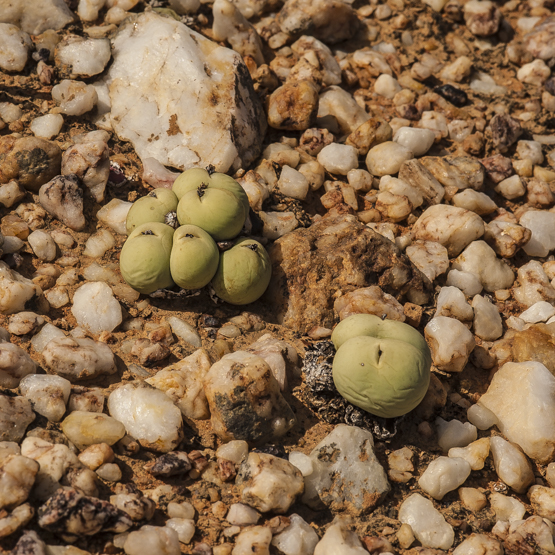
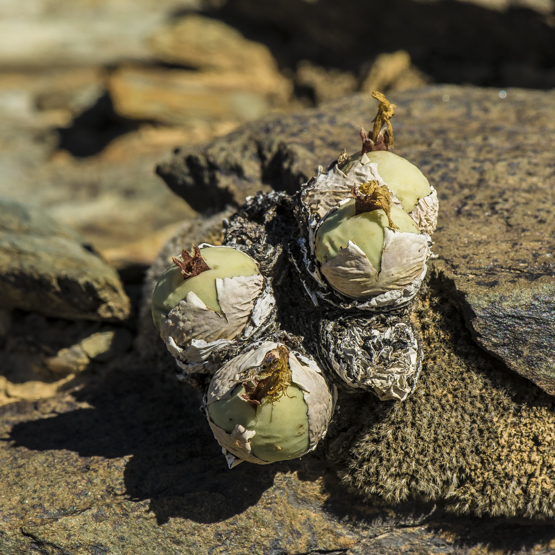
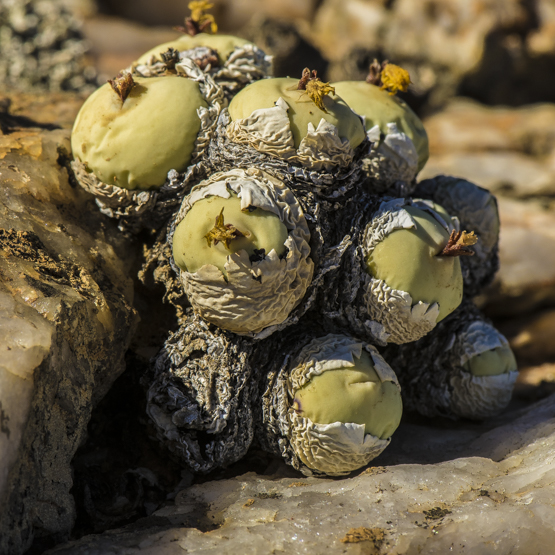
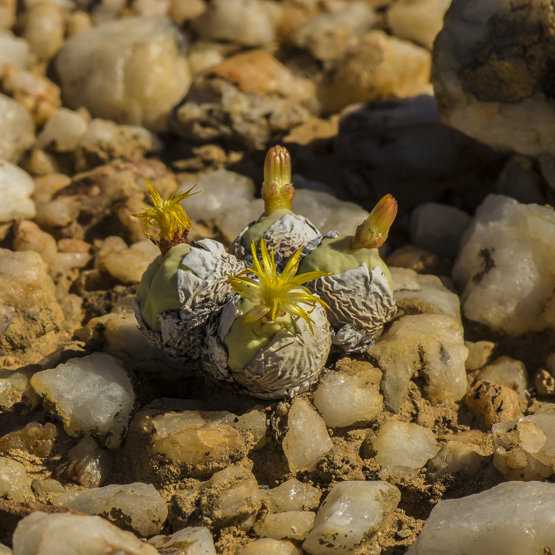
This very variable taxon occurs from southern Namibia to the Cederberg in South Africa, but mainly in the mountainous area of Namaqualand near Vanrhynsdorp, in rock crevices or between boulders, often in very exposed positions.
The plants form much-branched shrublets up to 0,5 m tall. The leaves are green, sometimes turning yellowish green or purplish red; they are almost triangular in section, usually 20-35 mm long (sometimes as short as 10 mm or as long as 50 mm) and 2-4 (sometimes 6) mm wide, about as thick as they are wide.
In autumn/early winter (March-June) the flowers appear, which as a rule are yellow-green, rarely white with a pink tinge.
